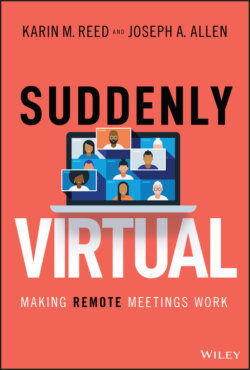Читать книгу Suddenly Virtual - Karin M. Reed - Страница 29
The Virtual Sales Call
ОглавлениеSince the pandemic began, almost 90% of business‐to‐business (B2B) sales have moved to a remote model, whether that be videoconferencing or phone. Certain sectors – technology, media, and telecom especially – are leading the way, but according to McKinsey, “Sales leaders are already moving quickly to navigate the crisis, with the best ones focusing on how to make targeted changes that help their businesses weather the storm and start preparing for the recovery” (Gavin et al. 2020).
While digital sales channels (think mobile apps, social media channels, and online communities) are gaining in importance, the person‐to‐person experience is still one of the cornerstones of sales strategy. COVID‐19 forced sales leaders to determine what that would look like in the new normal. For many organizations, person‐to‐person became video‐image‐to‐video‐image, and they were pleasantly surprised by the results and the impact on the bottom line. According to Gong, the #1 remote sales platform, prior to the pandemic, 41% more deals were won when the webcam was on during virtual sales calls, which is unsurprising, considering what a video‐enabled meeting offers. Video humanizes the message, allows you to deeply connect and build and foster relationships – all powerful tools in any sales strategy (Orlob 2019).
While some organizations are just dipping their toes into using video on sales calls, other companies are going beyond real‐time videoconferencing and embracing asynchronous video for email outreach. Platforms like BombBomb and Vidyard allow sales professionals to create personalized videos to send out to prospects. With shifts in how humans consume information, betting on video to cut through the noise seems like a pretty safe bet. Research by Wyzowl, a video marketing firm, shows that 66% of consumers prefer watching a video to reading about a product (Santora 2020). Video in an email is surely a differentiator from the typical text‐only (PDF attached) version, and it delivers a message in a way that most people prefer.
The exploration of new ways of selling came at a critical time for many businesses. For example, in the pharmaceutical and biotechnology industries, product launches planned for years needed to be mapped out using virtual strategies never imagined prior to the pandemic. Savvy sales leaders recognized that their sales forces needed to be equally as competent and confident on camera as they were in person because their go‐to market strategy might be completely virtual, totally in‐person, or a combination of the two.
Those who try to wait it out for a return to “normalcy” do so at their own peril. According to McKinsey, “B2B sales operations going forward will look fundamentally different from what they were before the pandemic.” With video as a core component of the sales process, best‐in‐class organizations are moving to create best‐in‐class virtual communicators and investing in the technology and training to stand out (Gavin et al. 2020).
